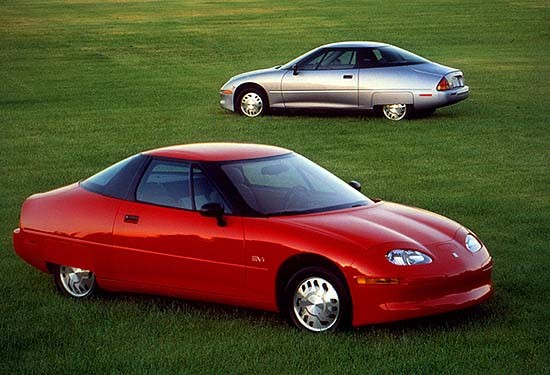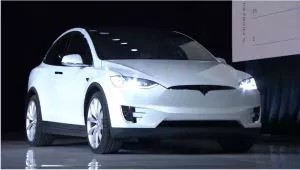In today’s guest blog, Bodo Albrecht, President of precious metals management consulting firm, BASIQ Corporation, puts Battery Recycling under the spotlight and looks at how, the Electric Vehicle pioneer, Tesla is preparing for sustainable End-Of-Life (EOL) disposal of batteries from its range of passenger electric vehicles.
Tesla Battery Recycling – the long road to “closed loop” systems
Electric vehicles (EV) – battery electric vehicles (BEV), to be precise, just won’t die. Even though General Motors famously crushed its “EV1” program in the late 1990s, the technology survived in other icons such as the Toyota Prius Hybrid (which was launched almost in parallel) and, 8 years later, the Tesla Roadster. Since then, not only has the technology broken through the 1 million unit mark in annual sales, it is also increasingly expected that EV (encompassing hybrid and fuel cell variants) will make up over half of all new car sales by 2040 and eventually replace ICE (internal combustion engine) technology all together.

The trend is driven for the most part by a necessity to reduce emissions and the need to utilize scarce resources on our planet more responsibly. So, naturally, the new technology is under strict scrutiny to ensure that it will achieve what it promises, not just in terms of local emissions but also the sustainability of its entire life cycle.
Vehicle batteries have been, and are still, at the center of this process. Life cycle considerations range from the mining of lithium, the carbon footprint of the underlying logistics of material procurement and component production, the generation and supply of electricity to end-of-life (EOL) solutions. Let us focus on the latter issue today:

While early EVs and hybrids like the Toyota Prius had nickel metal hydride (NiMH) batteries, the most commonly used batteries today are lithium-based because of their better energy density (longer range) and the ability to recharge them more rapidly. More precisely, these batteries utilize variations of lithium, cobalt, manganese, lanthanum, cerium, neodymium and other metals; a somewhat different technology employed by BYD, a leading Chinese producer of EVs, uses iron instead of cobalt. Because of the complexity of these systems, efficient recycling technologies are still in their infancy. Li-ion batteries have a life expectancy of 8-10 years meaning that the first Tesla batteries will become available for recycling just about now. But the car was originally made in very small numbers only, as was the Model S that followed in 2012, which is why investments in large scale, industrial size recycling plants will have to wait several years to see a positive RoI. What is more, companies like Tesla are pushing out the end-of-life issue by repurposing their batteries for stationary use, where high performance and quick recharging times are not as critical.
Experts expect that it will take until 2025 until EV batteries will become an economically viable industry for recyclers. This doesn’t mean that recycling technologies do not exist. Early on, Tesla partnered with California based Kinsbursky Brothers Inc (also doing business as “Toxco” and “Retriev”) who were already active in related fields of recycling cellphone, laptop and other batteries. The creation of scrap in battery production, as well as the need to dispose of defective, damaged or malfunctioning batteries from production vehicles, made it necessary to establish a recycling channel from the start. According to Tesla’s blog, the Kinsbursky recycling method does not use metal smelting but is based on crushing and separating battery components into a copper / cobalt concentrate, plastics and slurry. The report, which is from the early days of utilizing the process, states that only 60% of the input materials are fully recycled while 10% are being reused in other applications; the rest goes into landfill. Since then, these ratios will no doubt have improved but exact information on current performance is not published by Tesla.
Tesla’s second partner, according to a press release, is Umicore of Hoboken, Belgium. The company took on an entirely different path of material recovery. In a first step, “large format” batteries are being disassembled at the company’s plant in Hanau, Germany, and segregated into “pack materials” (copper cables, steel, plastic), electronic components and battery modules. Most of the pack materials can be recycled or reused without complex processing. Efficient recycling process already existed in-house for electronic components. For the battery modules, Umicore inaugurated a pilot plant in 2012 employing a patented “UHT” (“ultra-high temperature”) technology which, according to media statements, allows for an almost complete separation of metals and materials. The pyro-metallurgical process, which operates at or above 3,000° C, creates a metal alloy of cobalt, nickel and copper which is suited for further hydro-metallurgical separation afterward. A slag fraction remains which, Umicore claims, is suitable for reuse in the construction industry, or for further refining. The company has since launched into an expansion of its plant with a goal to process much larger volumes of EV batteries in future.
Either technology will be facing cost/benefit questions concerning the energy put into the recycling of spent Tesla batteries. Unsurprisingly, a large number of startup companies are taking aim at this emerging market which analysts are predicting will be worth as much as US$ 20 billion by 2025 and beyond. Fueled by an enthusiastic supply of grants and venture capital money, the race is on for more sustainable technologies to separate battery materials.
In an interview with “The Guardian”, and in context of the creation of Tesla’s “Gigafactory”, Khobi Brooklyn, a Tesla representative, hinted at plans to “conduct onsite recycling of lithium-ion batteries at the Gigafactory, capturing nickel, aluminum and lithium for use in new battery cells”. He was supported by Phil Hermann, chief energy engineer at Panasonic Eco Solutions, who said he expects to “ultimately see recycling rates at close to 100% for lithium-ion batteries”. Redwood Materials, a recent acquisition linked to two Tesla executives, might be a further hint in this direction.
Will an established entity pave the way to sustainable battery recovery? Or will a complete unknown, much like Tesla itself, succeed with an unconventional approach? It’s an exciting development which we will follow closely in this series.
Bodo Albrecht
President, BASIQ Corporation